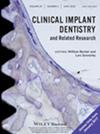Peri-Implant Health and Perfusion Parameters in Patients After Microvascular Jaw Reconstruction: A Clinical Cohort Study
Abstract
Introduction
The aim of this study was to evaluate perfusion parameters and clinical features of healthy implants and implants affected by peri-implant disease in patients who had undergone microvascular jaw reconstruction.
Methods
A total of 25 patients with 92 implants placed in microvascular transplants were included. Of these, 68 implants showed healthy peri-implant tissue, 12 were affected by peri-implant mucositis, and 12 were diagnosed with peri-implantitis. Peri-implant perfusion was measured mesially and distally at the implant shoulder using laser Doppler flowmetry and tissue spectrophotometry (LDF-TS), followed by a clinical evaluation, including measurement of probing depths, bleeding on probing (BOP), plaque index, biotype, type of implant, the restoration and the presence of keratinized tissue. Perfusion parameters were compared between the healthy implants and the implants with peri-implant disease based on the conventional BOP–based diagnosis of peri-implantitis, and the associations between the perfusion values and clinical measurements were analyzed. Optimal cut-off values for predicting peri-implantitis were calculated with receiver operating characteristics.
Results
The mean relative amount of hemoglobin and mean blood flow were significantly different between healthy implants and implants with peri-implant mucositis and peri-implantitis (p = 0.003 and p = 0.002, respectively). However, there are interindividual differences that appear to influence blood flow values as well. When a linear mixed regression model was applied, including the patient as a random variable, the difference in blood flow was no longer statistically significant (p = 0.400). Still, the optimal cut-off value of mean blood flow for predicting peri-implantitis was determined to be > 46.5 AU (AUC = 0.788; p < 0.001; CI = 0.695–0.881; sensitivity = 1.00, specificity = 0.60).
Conclusion
Implants in microvascular flaps are particularly vulnerable to peri-implant disease. Risk factors are the lack of keratinized peri-implant tissue, fixed restorations, bone-level implants, and high plaque levels.
As a noninvasive and objective method, LDF-TS can contribute to risk assessment by evaluating perfusion parameters and help detect the early onset of peri-implant disease.


 求助内容:
求助内容: 应助结果提醒方式:
应助结果提醒方式:


